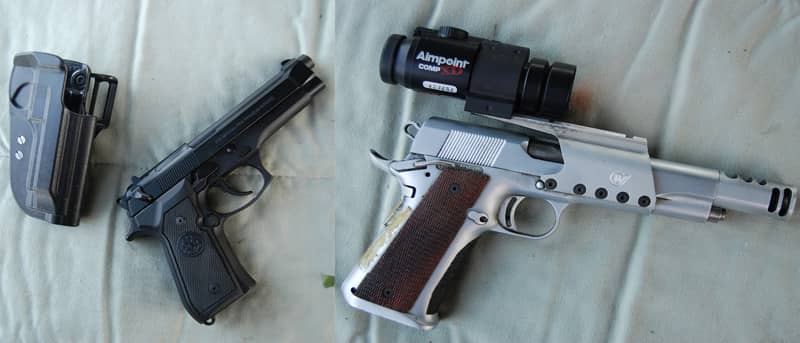Race vs. Regular Guns: Do Customized Guns Give Competitors an Unfair Advantage?
FUNshoot 05.09.12

This article comes courtesy of John M. Buol, Jr. of FirearmUserNetwork.com. Check out his site for more articles like this.
Think that competition shooters only win because they have better guns? Think again!
Shooters sometimes negatively comment on equipment used in competition and how it gives competitors an unfair advantage. Rather than listen to unsubstantiated complaints, let’s analyze actual numbers.
Consider El Presidente, Jeff Cooper’s classic practical pistol shooting drill that is still used by many trainers at defensive shooting schools as an exercise. This is also a recognized USPSA classification course, CM99-11.
The United States Practical Shooting Association recognizes a number of equipment divisions. Open is the unlimited, anything-goes realm of the race gun – a firearm that’s been heavily customized and tweaked for competition use. Production requires the use of factory equipment identical to what cops and soldiers carry on duty. USPSA keeps classification data separate based on gear. How much of a difference is there in these two equipment divisions on this course of fire?
Let’s look at the minimum score (Hit Factor) needed to earn a Master classification from USPSA on CM99-11, El Presidente:
- Open division: HF 10.10 (60 points in 5.94 seconds)
- Production division: HF 8.73 (60 points in 6.87 seconds)
The Open division shooter with an expensive, anything-goes race gun has only a 13.6% edge over the Production division shooter with a rack grade firearm identical to what is issued and used by police and military every day.
Assuming a perfect numerical score of 60 points, the Master class Open shooter is only 0.93 seconds faster and has a 1.37 better hit factor than a Master class Production shooter. This is the difference from a multi-thousand dollar full race gun and holster compared to a “regular” pistol and holster behind the hip. The Production gun has to be a double action or striker fired pistol (Glock, XD, etc.) as even untuned 1911 pistols or similar single action are disallowed from this division. In USPSA Production, even Jeff Cooper’s vaunted lightly-tuned 1911 is a “rooney” gun.
Anyone complaining about how match grade gear gives someone a huge advantage is uneducated. There is a difference, true, but it is much less than most people realize.
Also note when Jeff Cooper designed this course in the 1960s a hit factor of 6 was considered good and 7.2 was top notch. This was with a lightly tuned 1911. For Production division today a Master class shooter needs to beat a hit factor of 8.73 and a USPSA Grand Master needs to exceed 9.75.
If you’re foolish enough to believe that Master class Open shooter isn’t a skilled shot and only gets high scores from his equipment, note that you’ll need to shoot an El Presidente at with 8.73 hit factor or better with your carry gun to match him. Anything less proves your lack of score is due to lack of skill.

